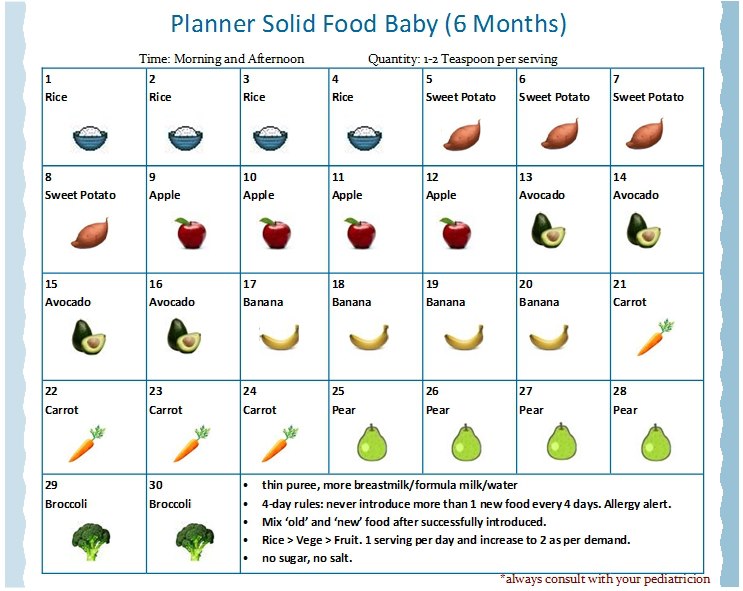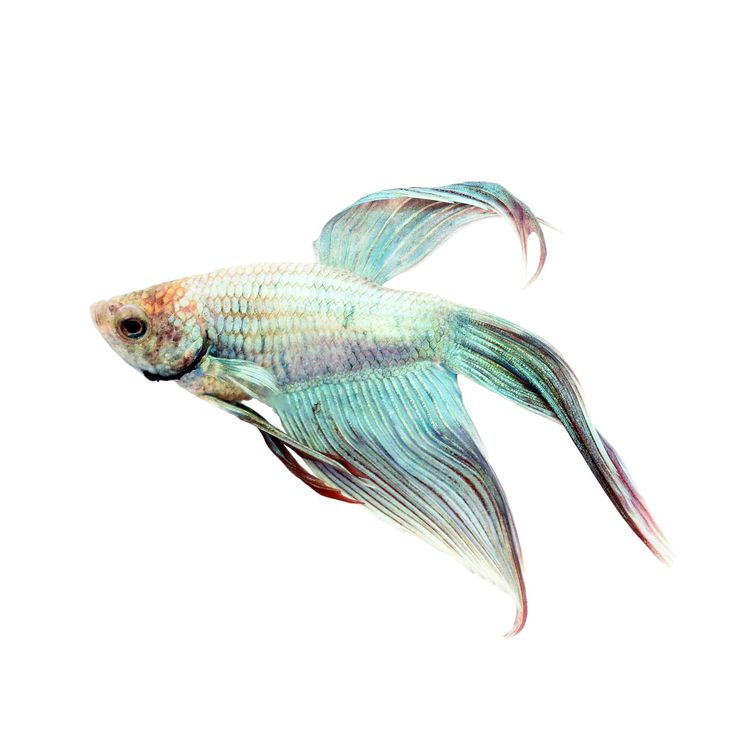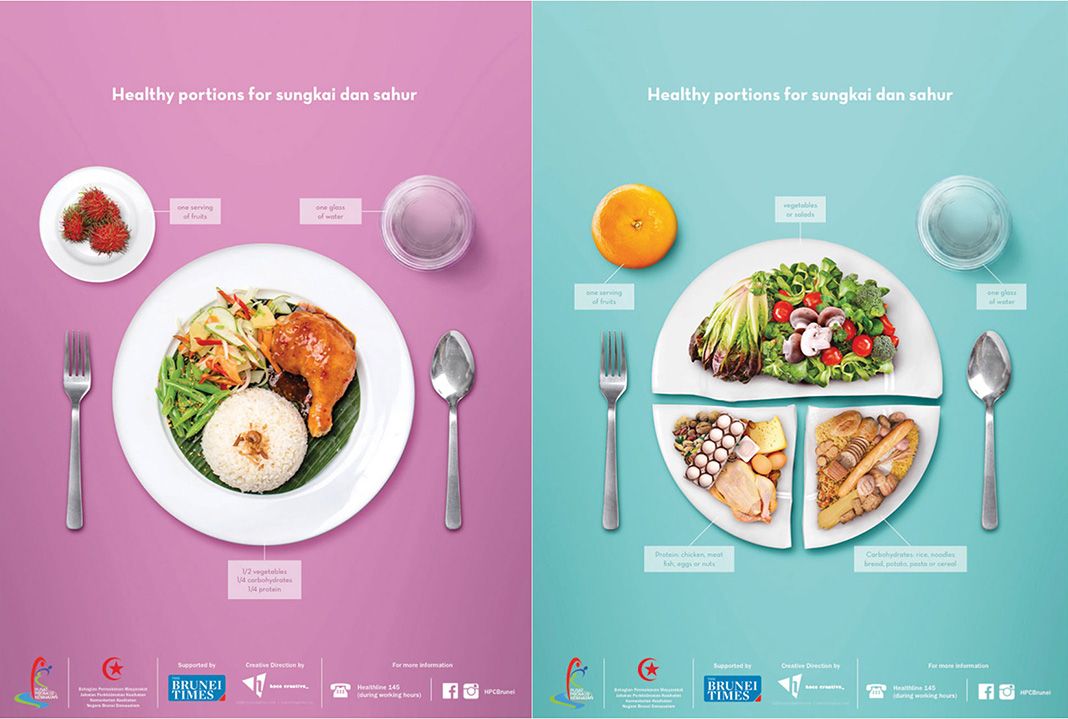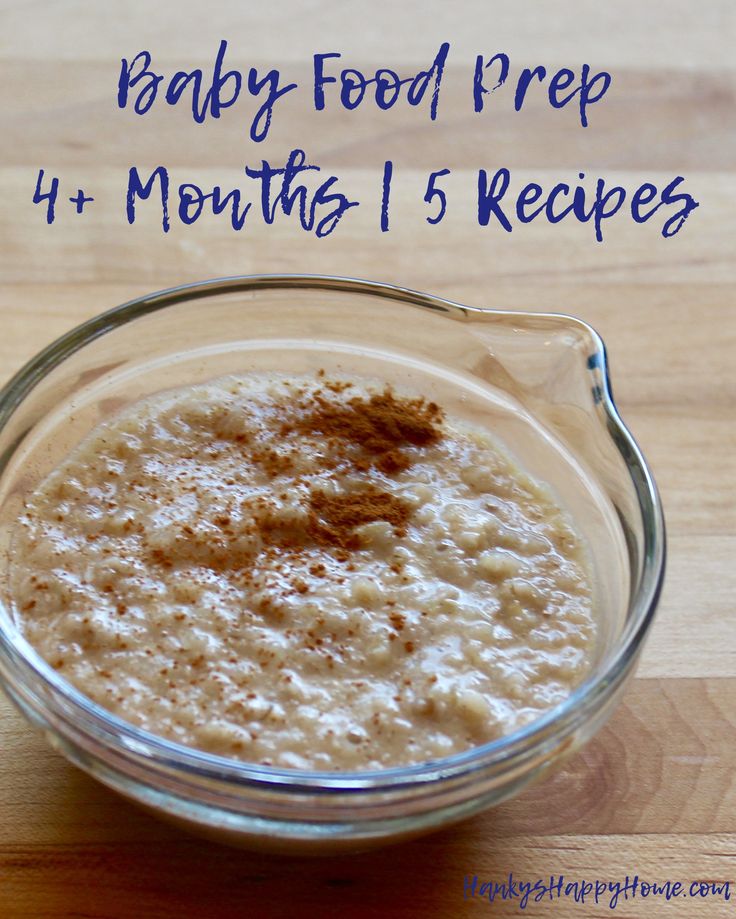What is the best first food to give my baby
Do's and Don'ts for Baby's First Foods
Breastfeeding has been shown to improve infant, child and maternal health outcomes and help control healthcare costs, but how long should breastfeeding last and when should parents introduce solid foods?
The Dietary Guidelines for Americans recommend exclusive breastfeeding, meaning the infant receives only breast milk, during the first six months of life for optimal nutrition and health benefits.
Once solid foods are introduced, health professionals recommend continuing breastfeeding through 12 months of age and, after that, as desired by mother and baby. Introducing your baby to solid foods is an exciting milestone. When you start introducing children to the world of solid foods, you are helping them shape their relationship with food and establish a healthy eating style. The timing for introducing solid foods will depend on the infant, but it is not recommended before the age of four months or after the age of six months.
Not sure how to get your baby started on solid foods? Consider these helpful tips.
Is Your Baby Ready to Transition?
Each child's readiness for solid food depends on their own rate of development. Signs a baby may be ready to start solid foods include sitting up with minimal support, demonstrating good head control, bringing objects to the mouth or grasping at small objects. Check with your pediatrician before starting solid foods.
Getting Started With Solids
Solid foods may be introduced in any order. However, puréed meats, poultry, beans and iron-fortified cereals are recommended as first foods, especially if your baby has been primarily breastfed, since they provide key nutrients. Only one new single-ingredient food should be introduced at a time.
Softer textures are very important when first introducing foods. Infants usually start with pureed or mashed foods around six months. As infants develop chewing and motor skills, they are able to handle items like soft pieces of fruit and finger foods. As the child ages, a variety of healthful foods is encouraged.
As the child ages, a variety of healthful foods is encouraged.
Weaning From Breastfeeding
When deciding if you should wean your baby to a bottle or a cup, consider their developmental readiness. Between 7 and 8 months, most infants will drink small amounts of liquid from a cup or a glass when someone else holds it. Older babies and toddlers often have the coordination to drink fluids from a cup by themselves.
If your baby is under 12 months of age and you are not continuing to breastfeed, wean from breast milk to iron-fortified infant formula. If your baby is 12 months or older, whole cow’s milk is appropriate.
Food Safety Do’s and Don’ts
Food safety concerns for infants and toddlers include food allergies, choking and risks for foodborne illness. Keep the following safety tips in mind:
Do talk with your pediatrician about the risk of food allergies. Introducing one new food at a time, every several days, allows time to monitor for allergic reactions. Current evidence does not indicate needing to wait beyond 4 to 6 months before introducing potential allergy-causing foods such as eggs, dairy, soy, peanuts and fish. In fact, introducing peanut-containing foods as early as 4 to 6 months of age may help prevent a peanut allergy. The Dietary Guidelines for Americans recommends introducing potentially allergenic foods when other complementary foods are introduced to an infant’s diet. Parents with concerns about food allergies should discuss how to include these foods with their pediatrician.
Current evidence does not indicate needing to wait beyond 4 to 6 months before introducing potential allergy-causing foods such as eggs, dairy, soy, peanuts and fish. In fact, introducing peanut-containing foods as early as 4 to 6 months of age may help prevent a peanut allergy. The Dietary Guidelines for Americans recommends introducing potentially allergenic foods when other complementary foods are introduced to an infant’s diet. Parents with concerns about food allergies should discuss how to include these foods with their pediatrician.
Don’t feed your baby solid foods from a bottle. It can be a choking hazard and despite a popular misconception, putting cereal in a baby's bottle won't help with sleeping through the night. Other foods that are considered to be choking hazards are listed below.
Do supervise your child while eating. Infants should be able to sit upright and face forward when you first introduce solid foods. This makes swallowing easier and choking less likely.
Don’t feed directly from the jar of food but instead spoon some food into a separate dish first. Feeding directly from the jar may introduce bacteria from your baby's mouth to the spoon and back into the food, creating a food safety issue.
Don’t feed honey to children under 12 months of age due to the risk of foodborne illness.
Examples of appropriate solid foods listed by age:
6 months:
- Well-cooked and pureed meat, poultry or beans
- Ground, cooked, single-grain cereal or infant cereal with breast milk or formula
- Cooked and pureed vegetables
- Mashed banana or avocado
9 months:
- Well-cooked, minced or finely chopped meat, poultry or beans
- A variety of cooked vegetables cut into small, ½ inch pieces, such as squash and green beans
- Sliced and quartered bananas or small pieces of other soft fruits
12 months:
- Soft, shredded meat, poultry or fish
- Small pieces of cooked vegetables
- Small pieces of soft, easy to chew fruits
- Mixed food dishes the family is eating in appropriately sized pieces
Not recommended for those under 4 years of age due to the risk of choking:
- Popcorn and whole kernel corn
- Nuts and seeds
- Large chunks of meat, poultry and cheese
- Candy, gum drops and jelly beans
- Hard, raw fruits or vegetables such as apples, celery and carrots
- Whole grapes and cherry tomatoes, unless cut into quarters
- Hot dogs, unless cut into strips and age appropriate, bite-size pieces
- Sticky foods, such as peanut butter, which can get stuck in the back of the mouth – peanut butter is okay if spread thinly on bread
For toddlers and preschoolers, chop grapes, meat, poultry, hot dogs and raw vegetables and fruits into small pieces (about ½ inch or smaller).
Nurturing Healthy Relationships with Food
Establishing a positive feeding relationship during infancy can have lifetime benefits. Keep in mind that children are responsible for how much and whether they eat so always wait for your baby to pay attention to each spoonful before you feed them. Don't be afraid to let your baby touch the food in the dish and on the spoon. You wouldn't want to eat something if you didn't know anything about it, would you? In addition, know the cues that your baby is done eating. A common cue babies are full is head turning.
Whatever happens, don't get discouraged and enjoy the experience. With a little patience and creativity, you can make your baby's first solid food eating experience fun for everyone involved!
Tags
Find a Nutrition Expert
Looking for credible nutrition information and recommendations? The Academy of Nutrition and Dietetics' network of credentialed food and nutrition practitioners are ready to help!
See Directory
The Ultimate Guide to Baby’s First Foods from 4-6 Months Old
If you have a baby between 4 and 6 months old, you’re probably starting to think about what their first foods will be…which means you probably have questions about baby’s first foods, too! Things like: “When should I start?” “Do I need to stick to single-ingredient foods?” and “How do I safely introduce common allergens like peanut butter without freaking out?!” Chances are, you miiiiight be a little overwhelmed at the idea of first foods, too.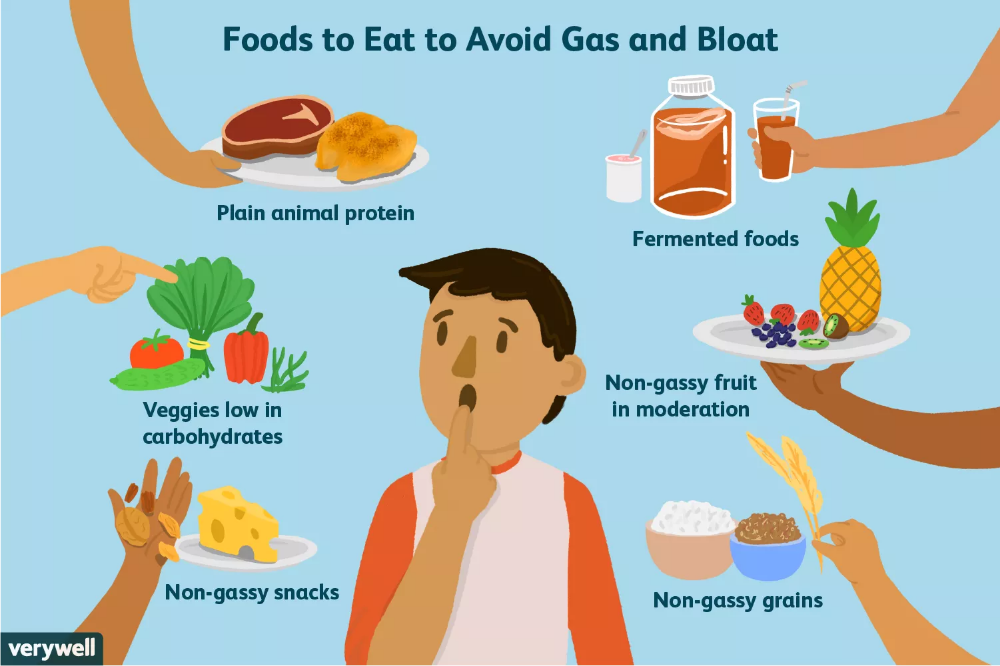 I know it’s a lot to think about, but the good news is that you’ve found your way here! And now that you’re here, I can help.
I know it’s a lot to think about, but the good news is that you’ve found your way here! And now that you’re here, I can help.
As a mom of two and a pediatric dietitian, I’m writing this post to help you navigate the nerves and the new chapter that is buying, preparing, and serving up baby’s first foods! Whether you’re going for purees, baby-led weaning, or a combination of both, consider this your ultimate guide to what first foods to serve and how to introduce them to your baby safely.
P.S. Don’t forget to save this post! I know it’s one you’ll want to come back to again and again.
This post contains affiliate links. As an Amazon Associate, I earn from qualifying purchases at no extra cost to you.
Skip right to the first foods info you’re looking for:
- When To Serve Baby Their First Foods
- Safety For Baby’s First Foods
- Purees vs. Baby-Led Weaning: What’s Right For You?
- The Best Foods To Introduce Baby To Between 4 & 6 Months Old
- The Ultimate Baby’s First Foods List
- Best Finger Foods & Baby-Led Weaning First Foods
- The Best Pureed First Foods
- The Best Easy-To-Make First Foods
- The Most Nutritious First Foods
- The Best Vegetarian First Foods
- Foods That Should Be Avoided
- Baby’s First Foods Chart: What, When & How To Serve Common First Foods to 4- to 6-Month-Old Babies
- First Foods For Babies With Allergies
When To Serve Baby Their First Foods
Although some people will serve baby’s first foods earlier, I recommend starting solids closer to the six-month mark.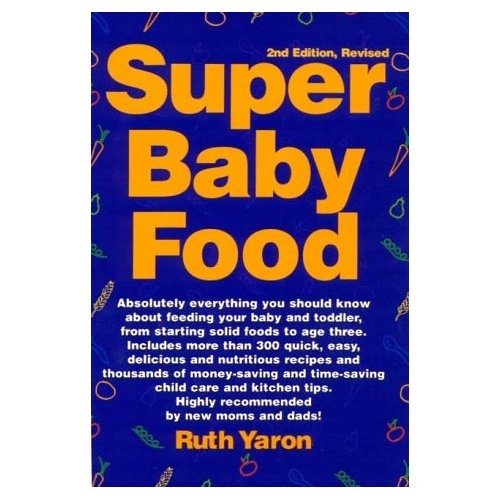 You want to avoid adding rice cereal or any other food to their bottle, and instead, begin solids when they display the signs of readiness listed below. By waiting to serve baby’s first foods until they’re truly ready, you increase their safety and chances of success as a new eater.
You want to avoid adding rice cereal or any other food to their bottle, and instead, begin solids when they display the signs of readiness listed below. By waiting to serve baby’s first foods until they’re truly ready, you increase their safety and chances of success as a new eater.
Signs of Eating Readiness
Your baby is ready to start solids if they:
- Can sit upright
- Can sit unsupported
- Have good head and neck control
- Have some practice bringing toys or objects from their hand to their mouth
- Show an interest in food (By reaching for what you’re eating, intently watching as others eat, etc.)
Can I Give My 4-Month-Old Baby Food?
Some pediatricians may okay solids around four months, but again, I generally recommend waiting until closer to six months, and when baby is displaying those signs of readiness.
There are more benefits to waiting than there are to starting earlier. Before six months, babies get everything they need from breastmilk or formula, so starting solids early won’t help them sleep better, grow faster, or, you know, become a professional athlete!
If you want to get your four- or five-month-old baby involved in mealtime, I recommend getting them acquainted with food and eating in these ways:
- Sit them near you while you’re eating
- Give them a silicone spoon to hold (I like NumNum GooTensils, EZPZ Tiny Spoons, and Olababy Training Spoons) and let them practice bringing it to their mouth
- Give them teething toys, like Sophie, or this elephant, to desensitize the gag reflex
FAQ: Do Formula- and Breast-Fed Babies Have Different Nutritional Needs?
Formula and breast milk are both completely nutritionally satisfactory for the first six months of life and beyond. So when it comes to starting solids, it doesn’t matter whether your baby has been receiving breast milk or formula.
So when it comes to starting solids, it doesn’t matter whether your baby has been receiving breast milk or formula.
That said, babies who are exclusively breastfed should receive a Vitamin D supplement, as levels in breastmilk are low. Formulas on the other hand are typically fortified with Vitamin D, so formula-fed babies don’t need one. Another thing to consider for a baby’s nutrition is iron. Babies build up an iron reserve from their mothers while in utero, but these stores begin to decline around six months of age for all babies.
Safety For Baby’s First Foods
Safety is a huge concern for parents when starting solids. Whether you start with baby foods, purees, or baby-led weaning, there are certain parameters to follow to make sure baby’s intro to food is safe and successful.
Choking Hazards for 4- to 6-Month-Old Babies
Choking hazards for babies ages four to six months old include any foods that are hard, crunchy, sticky, or chewy, as well those that are dangerous shapes.
Common hazardous foods are:
- Chips
- Popcorn
- Pretzels
- Raw Apple
- Globs of Nut Butter
- Hot Dogs
- Grapes
- Large seeds (sunflower, pumpkin, for example)
- Whole nuts
Many of these foods can be prepared safely to minimize the risk of choking, but they remain a choking hazard if they’re in their “natural” states until children turn four years old.
You can minimize choking risks by making sure your child is seated upright and strapped in a high chair with good trunk support. Foot support on a high chair is also helpful when your baby is starting out because it reinforces their stability, and when they’re more stable, they can chew and swallow more safely!
AAP & CDC Recommendations
The Center for Disease Control and Prevention (CDC) and the American Academy of Pediatrics (AAP) recommend starting solids around six months of age, but not before four months. Again, some pediatricians may okay solids around four months of age, but I usually recommend waiting until six months to make sure baby is showing the physical signs of readiness I outlined above.
The one exception may be for introducing certain allergens to certain infants, depending on their inherent level of risk. Speak with your pediatrician or allergist to see if they want to start your baby on certain foods early.
Purees vs. Baby-Led Weaning: What’s Right For You?
Before you serve baby their first foods, you’ll need to decide what kinds of foods you want to offer. And while there’s a lot of dialogue and opinions about the “best” way to feed a baby, I want you to know there isn’t one right way to do this. You can start with purees or baby-led weaning, or you can do a combination of both.
Tip: If you take a puree approach, help them learn to self-feed by offering baby preloaded spoons and letting them bring the food to their mouth.
Babies are very intuitive about getting the nutrition they need, so full permission to opt for the feeding style that’s comfortable for you. They’ll be able to get enough to eat either way! If simple textures feel easier and lower-stress for you, start with purees. If you’re ready to tackle preparing foods in a way that’s safe for baby, go for baby-led weaning. And if you’re on the go a lot or need a caretaker to feed your baby sometimes, maybe a hybrid approach is best. It truly doesn’t matter as long as you’re helping them foster independence in eating, and offering a variety of different foods.
If you’re ready to tackle preparing foods in a way that’s safe for baby, go for baby-led weaning. And if you’re on the go a lot or need a caretaker to feed your baby sometimes, maybe a hybrid approach is best. It truly doesn’t matter as long as you’re helping them foster independence in eating, and offering a variety of different foods.
One thing that DOES matter when it comes to feeding your baby is letting them be in charge of how much they eat (while you learn to interpret their hunger and fullness cues). And you can do this whether you’re feeding them purees or finger foods.
Baby Signs Of Hunger:
- Reaching for food
- Moving toward the spoon
- Opening their mouth
- Pointing to food
- Excited at the sight of food
Baby Signs Of Fullness:
- Turning away from food
- Batting spoon away
- Clamping mouth shut
- Playing with/throwing food
- Significantly slowed pace of eating
- No longer showing interest
The Best Foods To Introduce Baby To Between 4 & 6 Months Old
A common question I get is, “What baby foods should I introduce first?” And really, there isn’t one “best” first food.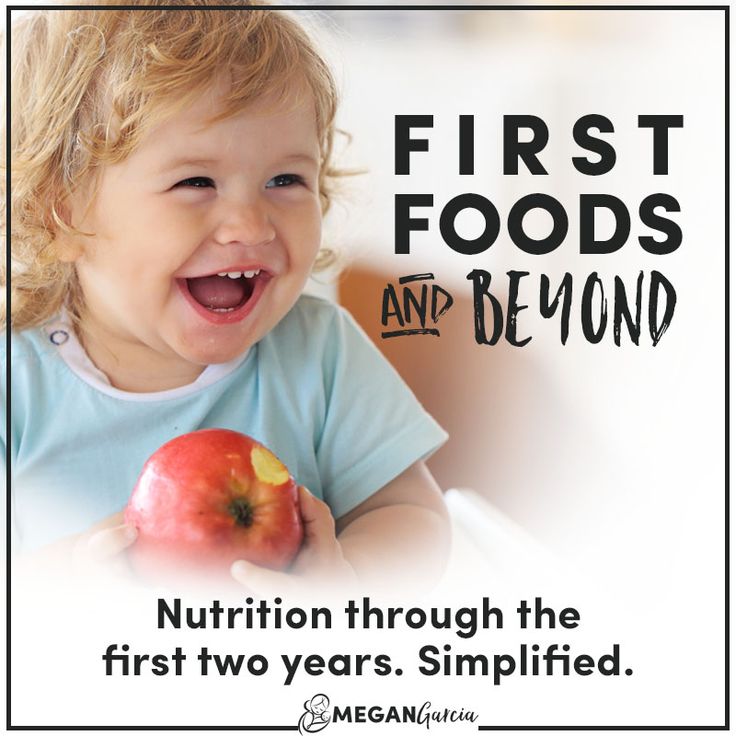 You do not have to start with only baby cereal or only veggies or fruits. In fact, you shouldn’t! Research shows that introducing babies to a wide variety of foods early on is what’s most beneficial.
You do not have to start with only baby cereal or only veggies or fruits. In fact, you shouldn’t! Research shows that introducing babies to a wide variety of foods early on is what’s most beneficial.
That said, my favorite first food is avocado! It’s a wonderful source of healthy fat, and it’s loaded with vitamins and minerals. Fat is essential to the developing brain and central nervous system, so we want to prioritize it within a baby’s first foods and make sure it’s completely unrestricted during their first two years of life.
(We also want to prioritize iron, because it’s a common dietary deficiency, and our babies begin to run out of the iron stores they got in utero by about six months.)
It’s Okay If Baby’s First Foods Have Multiple Ingredients!
You may choose to serve solely single-ingredient foods like avocado or sweet potato, but know that it’s not necessary to do so. It can be really helpful to serve a variety of new foods together, so they get used to different tastes and textures. Plus, there are nutritional benefits to mixing foods. For example, yogurt—a common first food for babies—can be fortified with mashed fruit, nut butter, or hemp seeds to up the nutritional value. (But if you ever notice a reaction or suspect an allergy to a component of a food combination you’ve been serving, stop serving the suspected allergen and contact your pediatrician.)
Plus, there are nutritional benefits to mixing foods. For example, yogurt—a common first food for babies—can be fortified with mashed fruit, nut butter, or hemp seeds to up the nutritional value. (But if you ever notice a reaction or suspect an allergy to a component of a food combination you’ve been serving, stop serving the suspected allergen and contact your pediatrician.)
PSA: Skip The Baby Cereal
The recommendations from years past telling parents to start with rice-based infant cereals are outdated now. Rice cereals aren’t super nutritious, and we don’t want to rely too much on rice due to potential exposure to arsenic. So instead of cereals, offer new foods in safely-prepared forms. This is way more nutritious, and it exposes them to different flavors, textures, and nutrients which are beneficial for growth and development and can protect them against food allergies and picky eating.
The Ultimate List of Baby Foods
I’m covering allll the best kinds of baby foods separately, so you get all the juicy info and context you need.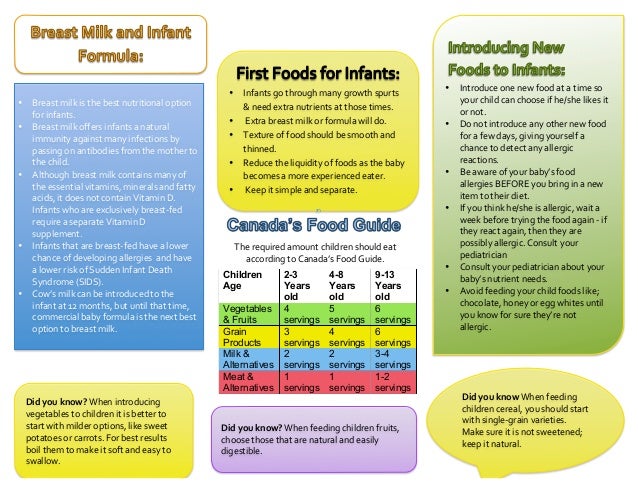 Then, I’m combining them all into one big, bad, comprehensive list of the best first foods for baby at the end.
Then, I’m combining them all into one big, bad, comprehensive list of the best first foods for baby at the end.
SKIP TO THE LIST
Best Finger Foods & Baby-Led Weaning First Foods
For baby’s first foods, I like to suggest approachable options like avocado, sweet potato, and banana. These can be prepared and served baby-led-weaning-style by cutting them in wedges or crescent shapes that can be gripped with a palmar grasp. Bananas can be served as halves or in thirds-long ways. Just stick to serving items in longer shapes, about the width of two adult fingers, for the first few months of BLW. This way, baby can hold them and bring them to their mouth. Once your baby is a little bit older—usually around 9 months—many foods can be served safely in smaller pieces.
The Best Pureed First Foods
If you’re going the puree route, you can start with many of the same foods. Just mash up the sweet potato, avocado, banana—or whatever else, really!—and serve those as purees.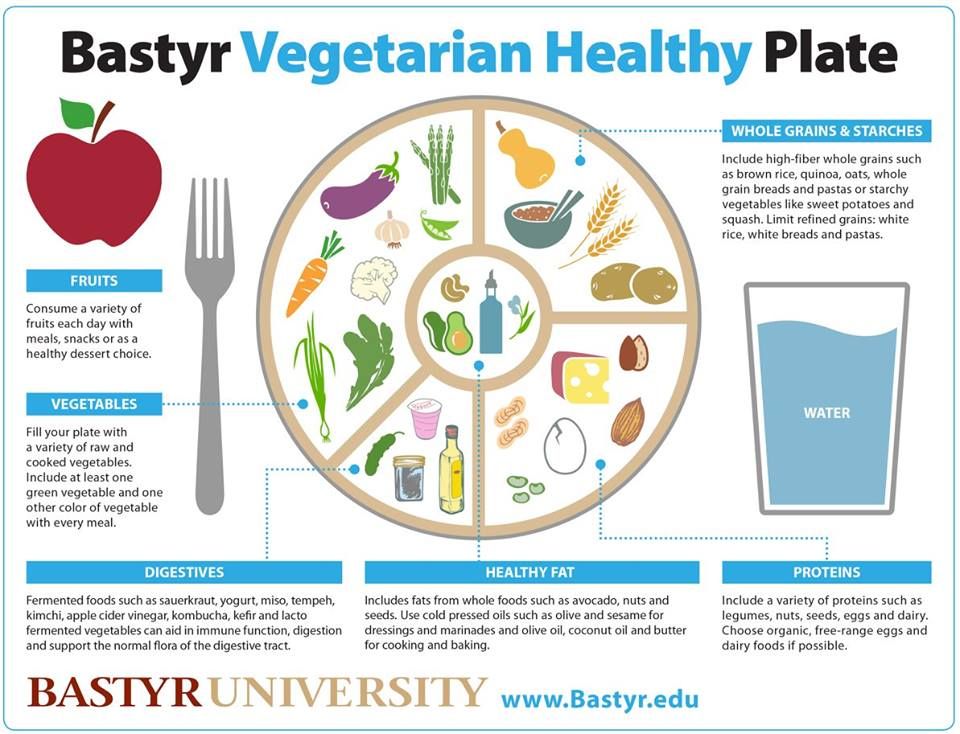 You may want to thin them some with breastmilk or formula.
You may want to thin them some with breastmilk or formula.
But shortly after starting with these foods, I would move on to introducing allergenic foods, because the early and repeated introduction of allergenic foods can be protective against the development of food allergies in babies, specifically for peanuts. Foods like yogurt and peanut butter may be good early options for allergenic introductions and are already in pureed form. Just start with small amounts.
The Best Easy-To-Make First Foods
Foods that are naturally soft are the easiest to prepare for young eaters. Banana, yogurt, apple sauce, and avocado are all great options that are easy to serve with little to no prep. You can also mix creamy nut butter with yogurt and incorporate other mashed fruits, like raspberries and blackberries, to ramp up the nutritional value while keeping prep extremely low.
Don’t feel like you need to shy away from foods that aren’t naturally soft, either! Many other fruits and veggies, like sweet potato, broccoli, and pears, can also be safely served with simple steaming or roasting techniques. Just make sure to cook these foods until they’re soft enough to be smashed between your fingers, so baby can safely enjoy them, and present them in a shape or style that they can safely navigate. (Soft foods can also be served to them on a pre-loaded spoon if they can’t be eaten by hand, yet.)
Just make sure to cook these foods until they’re soft enough to be smashed between your fingers, so baby can safely enjoy them, and present them in a shape or style that they can safely navigate. (Soft foods can also be served to them on a pre-loaded spoon if they can’t be eaten by hand, yet.)
Low-Prep First Food Options:
- Banana
- Yogurt (Can mix with mashed berries or nut butter)
- Apple Sauce
- Avocado
- Steamed Veggies (Soft enough to mash between your fingers)
The Most Nutritious First Foods
There are so many great, nutrient-dense choices for baby’s first foods that are safe by six months of age no matter what type of foods you serve. (But it’s true that, if you take a baby-led weaning approach, you’ll probably have more options.) Sardines and salmon (fresh or canned) are both loaded with omega-3 fatty acids, DHA, protein, and tons of vitamins and minerals, which make them highly nutritious first foods! From the plant kingdom, sweet potato and avocado are nutrient-dense foods with a wide variety of vitamins and minerals including vitamin A, vitamin B6, vitamin C, and magnesium.
The Best Vegetarian First Foods
Vegetarian foods are some of the best first foods for baby! There are tons of wonderful and nutritious fruit and veggie options that suit young eaters, like berries, bananas, avocados, potatoes, broccoli, squash, and many others. Non-produce vegetarian items are great first foods for baby, too. Think tofu strips, eggs (yolk and white), beans, nut butter, and oatmeal.
Just be sure you serve these in safe shapes and forms, and that they’re soft enough to be mashed between your fingers. Always avoid serving things that are hard, sticky, or chewy, and keep in mind that many raw vegetables and fruits are choking hazards (like celery and apple).
Foods That Should Be Avoided
While most foods have a place in most diets, there are some foods to avoid serving your 4- to 6-month-old baby:
Added Sugar
To make sure our babies get the most nutrition possible during this important phase of growth and development, it’s best to avoid added sugar for children under two. Added sugar doesn’t have much nutritional value, so it’s best to limit it as much as possible and avoid it altogether if possible.
Added sugar doesn’t have much nutritional value, so it’s best to limit it as much as possible and avoid it altogether if possible.
Want to offer baby fun, homemade foods like cookies, bars, and muffins once they are fully established on solids? You still can! Just use the recipes in my No Sugar, Still Sweet cookbook, where everything is sweetened with fruit alone.
Honey
Babies should strictly avoid honey before 12 months of age. Honey can be contaminated with spores of a bacteria called clostridium botulinum. In babies under one, these spores can multiply and produce a dangerous toxin that causes infant botulism.
Related: Honey for Babies & Toddlers
Sodium
Finally, sodium should be limited. For babies ages four to six months, the recommended sodium limit intake for a day is 110 mg, which includes any sodium present in breast milk and/or formula.
Fruit Juice
The American Academy of Pediatrics recommends no fruit juice before 1 year of age. Juice offers very few nutritional benefits and therefore isn’t a helpful addition to a baby’s diet.
Juice offers very few nutritional benefits and therefore isn’t a helpful addition to a baby’s diet.
- Under 1: No Juice
- Age 1-3: 4 Oz Daily Max
- Age 4-6: 4-6 Oz Daily Max
- Age 7-18: 8 Oz Daily Max
The Ultimate Baby’s First Foods List
- Avocado
- Sweet Potato (Mashed or Steamed)
- Broccoli (Steamed or Roasted)
- Pears (Steamed or Roasted)
- Butternut Squash
- Mango
- Banana
- Yogurt*
- Nut Butter* (Mixed-In To Purees or Spread Thin on Toast)
- Oatmeal
- Apple Sauce
- Mashed Raspberries
- Mashed Blueberries
- Mashed Blackberries
- Canned Sardines*
- Canned Salmon*
- Potatoes (Mashed or Steamed)
- Squash (Steamed or Roasted)
- Tofu Strips*
- Baby-Safe Eggs* (Try omelet-style and cut into strips!)
- Beans (Mashed)
*Common Allergens
Baby’s First Foods Chart: What, When & How To Serve Common First Foods to 4- to 6-Month-Old Babies
| BABY’S FIRST FOOD | WHEN TO SERVE | HOW TO SERVE |
| Avocado | 6 Months or Later | Mashed, mixed-in to sauces, and purees, or in wedge shapes baby can grip (BLW).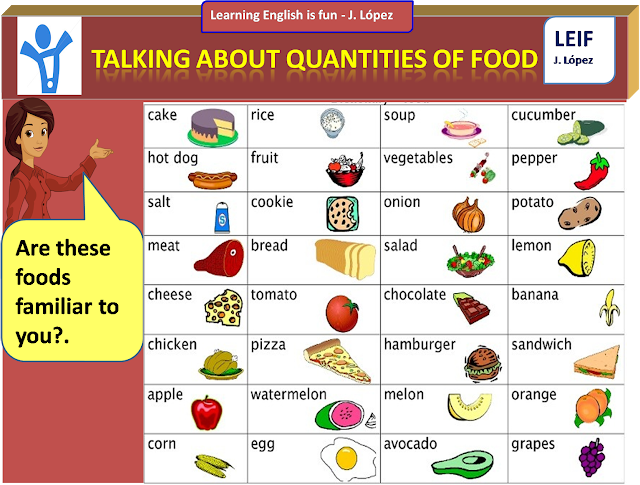 |
| Oatmeal | 6 Months of Later | Prepare with breastmilk or formula. Option to mix in yogurt, nut butter, mashed berries, or mashed banana. |
| Banana | 6 Months or Later | Mashed, mixed into sauces and purees, cut in halves or third-long pieces (BLW). |
| Sweet Potato | 6 Months or Later | Roasted or steamed so they’re soft enough to mash between your fingers. |
| Mango | 6 Months or Later | Cut into wedge-shaped pieces that baby can grip. Or, give baby the pit to work on! |
| Eggs (Common Allergen) | 6 Months or Earlier (If advised by a pediatrician or allergist) | Prepare eggs omelet-style and cut them into strips baby can grip. |
| Yogurt (Common Allergen) | 6 Months or Earlier (If advised by a pediatrician or allergist) | Serve yogurt as-is or mix it into sauces, oatmeals, or purees. |
| Nut Butter (Common Allergen) | 6 Months or Earlier (If advised by a pediatrician or allergist) | Mix nut butters into oatmeal or purees, or spread them thinly over toast. |
| Berries | 6 Months or Later | Mash berries into a thicker, jam-like consistency before serving. Consider mixing mashed berries into other foods. |
| Tofu (Common Allergen) | 6 Months or Earlier (If advised by a pediatrician or allergist) | Cut into thin strips that baby can grasp and fry them up in a pan. Serve cool or warm, not hot. |
| Broccoli | 6 Months or Later | Steamed or roasted so it’s soft enough to mash between your fingers. |
| Apple Sauce | 6 Months or Later | As-is or mixed in to oatmeal, yogurt, or purees. |
| Canned Sardines (Common Allergen) | 6 Months or Later | Whole piece or mashed with other foods. |
| Honey | 1 Year or Later | At 1 year or later, serve mixed-in to yogurt, sauces, or purees, or spread thinly on toast. |
| Fruit Juice | 1 year or Later | At 1 year or later, offer up to 4 oz per day. |
| Sugar | 2 Years or Later | Avoid added sugar before age two, then introduce it gradually and only as-needed. |
First Foods For Babies With Allergies
Food allergies have grown in prevalence over the last 50 years, and it’s now estimated that about 7% of babies have a food allergy! And while that can make choosing a baby’s first foods a little scary, the good news is that up to 80% of kids can grow out of their food allergies. (Especially when those allergies are milk and eggs!)
Important Information on Allergic Reactions & Introducing Allergens
For at least the last decade, parents were told to wait until 12 months or older to introduce the top eight allergens (peanut, tree nuts, eggs, milk, wheat, soy, fish, and shellfish) to their babies. Now, things are different. Today, we recommend introducing allergenic foods to your baby when they start solids, which, for most children, is around six months old. Introducing allergenic foods at this point in your baby’s development can reduce the risk of developing some food allergies—especially allergies to eggs and peanuts.
Introducing allergenic foods at this point in your baby’s development can reduce the risk of developing some food allergies—especially allergies to eggs and peanuts.
For Babies With Known Allergies
If your baby is already known to have a food allergy, do not introduce that food. But, if baby has certain risk factors WITHOUT a confirmed allergy (like eczema or a family member with a food allergy), consult the pediatrician. You may be referred to an allergist who will determine the best course of action with an introduction.
Introducing Allergens: What To Watch For
Mild allergic reactions may look like new hives around the mouth or face.
More severe reactions can include:
- Vomiting
- Lip Swelling
- Widespread Hives
- Face Or Tongue Swelling
- Difficulty Breathing
- Changes In Skin Color
- Sudden Lethargy Or Limpness
If you notice any of these severe signs, seek emergency medical help immediately.
Make Starting Solids Simple
I know that getting ready to start serving your baby their first foods is nerve-wracking. But with the right info (which you now have) and prep (which you’re equipped to do), I promise you it can be a great experience. Now that you know all the things about safety, allergic reactions, which foods to serve, and how to serve them, go in with your bases covered and just enjoy the time spent with your little one.
I also know that if you decide to go with solids, you might be a little extra nervous about things like gagging and making all foods baby-safe. And, I get it! These things can be intimidating the first few times. Lucky for you though, you’re not alone! You’ve got me in your corner. I’ve been there before, I’ve helped so many parents navigate through it, and I know you can do it, too.
To help you up your confidence, ditch the unnecessary doubts, and feed them well right from the start, I put together my research-backed Simply Solids guide. If you’re about to start—or already on—your baby-feeding journey, Simply Solids is a must-have.
If you’re about to start—or already on—your baby-feeding journey, Simply Solids is a must-have.
START THE CAR! Simply Solids Is Usually $15, But Right Now It’s Free
.Trust me, you’ll be kicking yourself if you don’t grab your copy right the heck now 👇
Get The Free Guide
Baby’s First Foods
Kacie Barnes, MCN, RDN, LD
Summary of baby first foods 4 to 6 months some ideas in case you want a printer friendly list!
No ratings yet
Print Recipe Pin RecipePrep Time 5 mins
Cook Time 5 mins
Total Time 10 mins
Course Breakfast, Dinner, lunch
Cuisine American
Servings 2 servings
Calories 50 kcal
- Avocado
- Oatmeal
- Banana
- Sweet Potato
- Mango
- Eggs (Common Allergen)
- Yogurt (Common Allergen)
- Nut Butter (Common Allergen)
- Berries
- Tofu (Common Allergen)
- Broccoli
- Apple Sauce
- Canned Sardines (Common Allergen)
Mashed, mixed-in to sauces or purees, or in wedge shapes baby can grip (BLW).

Prepare with breastmilk, formula, canned coconut milk or water. Option to mix in yogurt, nut butter, mashed berries, or mashed banana.
Mashed, mixed into sauces and purees, cut in halves or third-long pieces (BLW).
Roasted or steamed so they’re soft enough to mash between your fingers. Or, serve mashed with a spoon.
Cut into wedge-shaped pieces that baby can grip. Or, give baby the pit to work on!
Serve yogurt as-is or mix it into sauces, oatmeals, or purees.
Mix nut butters into oatmeal or purees, or spread them thinly over toast.
Mash berries into a thicker, jam-like consistency before serving.
 Consider mixing mashed berries into other foods.
Consider mixing mashed berries into other foods.
Cut into thin strips that baby can grasp and fry them up in a pan. Serve cool or warm, not hot.
As-is or mixed in to oatmeal, yogurt, or purees.
Calories: 50kcal
Keyword baby
Tried this recipe?Let me know how it was!
Diet for a 4-6 month old baby
Your baby is already 4 months old. He has noticeably grown up, become more active, is interested in objects that fall into his field of vision, carefully examines and reaches for them. The emotional reactions of the child have become much richer: he joyfully smiles at all the people whom he often sees more and more often, makes various sounds.
You are still breastfeeding your baby or have had to switch to mixed or formula feeding. The child is actively growing, and only with breast milk or infant formula, he can no longer always get all the necessary nutrients. And that means it's time to think about complementary foods. nine0003
The child is actively growing, and only with breast milk or infant formula, he can no longer always get all the necessary nutrients. And that means it's time to think about complementary foods. nine0003
The optimal time to start its introduction is between 4 and 6 months, regardless of whether the baby is receiving breast milk or formula. This is the time when children respond best to new foods. Up to 4 months, the child is not yet ready to perceive and digest any other food. And with the late introduction of complementary foods - after 6 months, children already have significant deficiencies of individual nutrients and, first of all, micronutrients (minerals, vitamins, long-chain polyunsaturated fatty acids, etc.). In addition, toddlers at this age often refuse new foods, they have delayed development of chewing skills for thick foods, and inadequate eating habits are formed. It is important to know that, no matter how strange it may seem at first glance, with a delayed appointment of complementary foods, allergic reactions more often occur on them. nine0003
nine0003
When is it advisable to introduce complementary foods as early as 4 months, and when can you wait until 5.5 or even 6 months? To resolve this issue, be sure to consult a pediatrician.
As a rule, at an earlier age (4 - 4.5 months), complementary foods are introduced to children at risk of developing iron deficiency anemia, as well as children with insufficient weight gain and with functional digestive disorders.
The optimal time to start complementary foods for a healthy baby is between 5 and 5.5 months of age. nine0003
The World Health Organization recommends that breastfed babies should be introduced to complementary foods from 6 months of age. From the point of view of domestic pediatricians, which is based on extensive practical experience and scientific research, this is possible only in cases where the child was born on time, without malnutrition (since in these cases the mineral reserves are very small), he is healthy, grows well and develops. In addition, the mother should also be healthy, eat well and use either specialized enriched foods for pregnant and lactating women, or vitamin and mineral complexes in courses.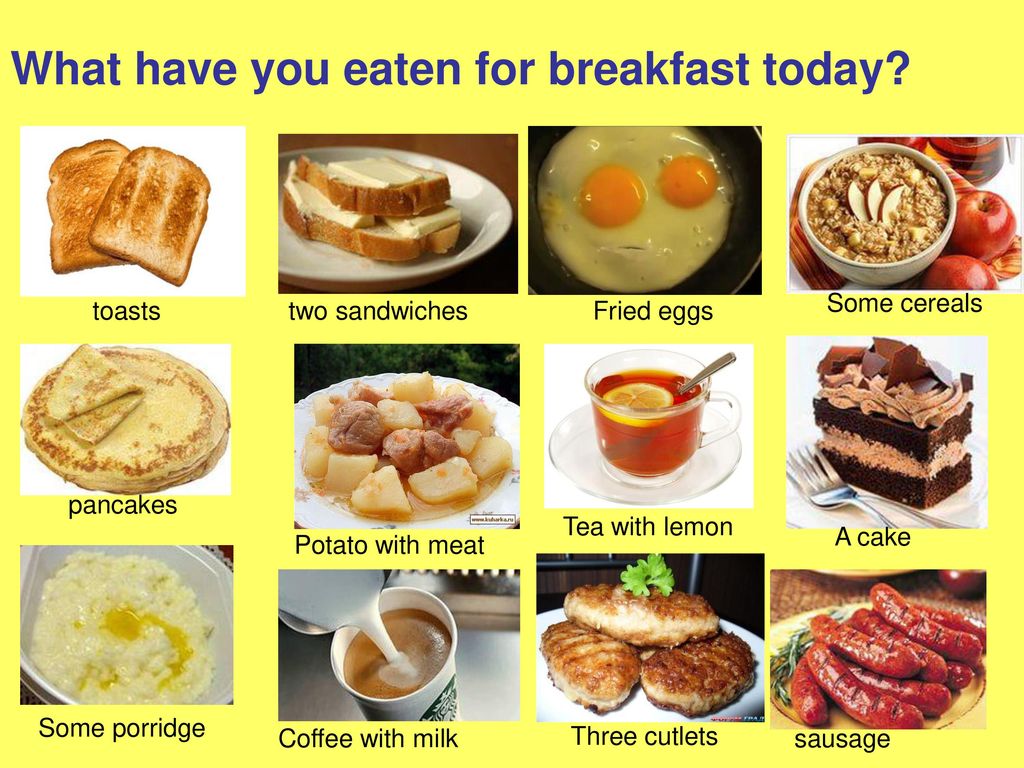 Such restrictions are associated with the depletion of iron stores even in a completely healthy child by 5-5.5 months of age and a significant increase in the risk of anemia in the absence of complementary foods rich or fortified with iron. There are other deficits as well. nine0003
Such restrictions are associated with the depletion of iron stores even in a completely healthy child by 5-5.5 months of age and a significant increase in the risk of anemia in the absence of complementary foods rich or fortified with iron. There are other deficits as well. nine0003
The first complementary food can be vegetable puree or porridge, fruit puree is better to give the baby later - after tasty sweet fruits, children usually eat vegetable puree and cereals worse, often refuse them altogether.
Where is the best place to start? In cases where the child has a tendency to constipation or he puts on weight too quickly, preference should be given to vegetables. With a high probability of developing anemia, unstable stools and small weight gains - from baby cereals enriched with micronutrients. And if you started introducing complementary foods with cereals, then the second product will be vegetables and vice versa. nine0003
If the first complementary food is introduced at 6 months, it must be baby porridge enriched with iron and other minerals and vitamins, the intake of which with breast milk is no longer enough.
Another important complementary food product is mashed meat. It contains iron, which is easily absorbed. And adding meat to vegetables improves the absorption of iron from them. It is advisable to introduce meat puree to a child at the age of 6 months. Only the daily use of children's enriched porridge and meat puree can satisfy the needs of babies in iron, zinc and other micronutrients. nine0003
But it is better to introduce juices later, when the child already receives the main complementary foods - vegetables, cereals, meat and fruits. After all, complementary foods are needed so that the baby receives all the substances necessary for growth and development, and there are very few in their juices, including vitamins and minerals.
Juices should not be given between feedings, but after the child has eaten porridge or vegetables with meat puree, as well as for an afternoon snack. The habit of drinking juice between meals leads to frequent snacking in the future, a love of sweets is instilled, children have more tooth decay and an increased risk of obesity. nine0003
nine0003
With the start of the introduction of complementary foods, the child is gradually transferred to a 5-time feeding regimen.
Rules for the introduction of complementary foods:
- preference should be given to baby products of industrial production, they are made from environmentally friendly raw materials, have a guaranteed composition and degree of grinding
- Complementary foods should be offered to the baby by spoon at the start of feeding, before breastfeeding (formula feeding)
- the volume of the product increases gradually, starting with ½ - 1 spoon, and in 7 - 10 days we bring it to the age norm, subsequent products within the same group (cereals from other cereals or new vegetables)
- can be entered faster, in 5 - 7 days
- start introduction with monocomponent products
- it is undesirable to give a new product in the afternoon, it is important to follow how the child reacts to it
- do not introduce new products in the event of acute illnesses, as well as before and immediately after prophylactic vaccination (should be abstained for several days)
When introducing a new type of complementary food, first try one product, gradually increasing its amount, and then gradually “dilute” this product with a new one. For example, vegetable complementary foods can be started with a teaspoon of zucchini puree. During the week, give the baby only this product, gradually increasing its volume. After a week, add a teaspoon of mashed broccoli or cauliflower to the zucchini puree and continue to increase the total volume every day. Vegetable puree from three types of vegetables will be optimal. The portion should correspond to the age norm. Over time, you can replace the introduced vegetables with others faster. nine0003
For example, vegetable complementary foods can be started with a teaspoon of zucchini puree. During the week, give the baby only this product, gradually increasing its volume. After a week, add a teaspoon of mashed broccoli or cauliflower to the zucchini puree and continue to increase the total volume every day. Vegetable puree from three types of vegetables will be optimal. The portion should correspond to the age norm. Over time, you can replace the introduced vegetables with others faster. nine0003
After the introduction of one vegetable (bringing its volume to the required amount), you can proceed to the intake of porridge, and diversify the vegetable diet later.
If the child did not like the dish, for example, broccoli, do not give up and continue to offer this vegetable in a small amount - 1-2 spoons daily, you can not even once, but 2-3 times before meals, and after 7 - 10, and sometimes 15 days, the baby will get used to the new taste. This diversifies the diet, will help to form the right taste habits in the baby. nine0003
nine0003
Spoon-feeding should be done with patience and care. Forced feeding is unacceptable!
In the diet of healthy children, porridge is usually introduced after vegetables (with the exception of healthy breastfed children, when complementary foods are introduced from 6 months). It is better to start with dairy-free gluten-free cereals - buckwheat, corn, rice. At the same time, it is important to use porridge for baby food of industrial production, which contains a complex of vitamins and minerals. In addition, it is already ready for use, you just need to dilute it with breast milk or the mixture that the baby receives. nine0003
Children suffering from food allergies are introduced complementary foods at 5-5.5 months. The rules for the introduction of products are the same as for healthy children, in all cases it is introduced slowly and begins with hypoallergenic products. Be sure to take into account individual tolerance. The difference is only in the correction of the diet, taking into account the identified allergens.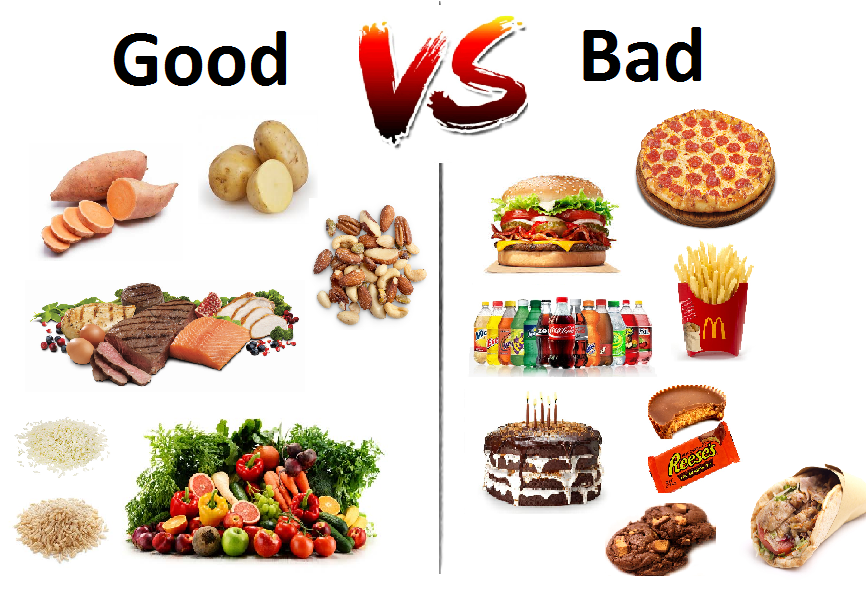 From meat products, preference should first be given to mashed turkey and rabbit.
From meat products, preference should first be given to mashed turkey and rabbit.
Diets for different age periods
Explain how you can make a diet, it is better to use a few examples that will help you navigate in compiling a menu specifically for your child.
From 5 months, the volume of one feeding is on average 200 ml.
Option 1.
If your baby started receiving complementary foods from 4-5 months, then at 6 months his diet should look like this:
| I feeding 6 hours | Breast milk or VHI* | 200 ml |
| II feeding 10 hours | Dairy-free porridge** Supplementation with breast milk or VHI* | 150 g 50 ml |
| III feeding 14 hours | Vegetable puree Meat puree Vegetable oil Supplemental breast milk or VHI* | 150 g 5 - 30 g 1 tsp 30 ml |
| IV feeding 18 hours | Fruit puree Breast milk or VHI* | 60 g 140 ml |
| V feeding 22 hours | Breast milk or VHI* | 200 ml |
* - infant formula
** - diluted with breast milk or VHI
Option 2.
* - infant formula Option 3. : ** - diluted with breast milk Up to 7 months, increase the volume of porridge and vegetable puree to 150 g and introduce fruit puree. The materials were prepared by the staff of the Healthy and Sick Child Nutrition Laboratory of the National Research Center for Children's Health of the Ministry of Health of Russia and are based on the recommendations given in the National Program for Optimizing the Feeding of Children in the First Year of Life in the Russian Federation, approved at the XV Congress of Pediatricians of Russia (02.2009d.) Published: 06/20/2020 Reading time: 4 min. Number of reads: 256428 The author of the article: Ponomareva Yulia Vladimirovna Pediatrician, candidate of medical sciences, allergist-immunologist The first year of a baby's life is unique. The processes of growth and development are so intense that each new month is not like the previous one. In this regard, the child's diet undergoes changes every month to meet the growing needs of the body for nutrients, vitamins, minerals and other biologically active substances. Content: Hide The basic food groups that must be included in the daily diet of children in the second half of life remain the same - vegetables, fruits, meat, cereals, dairy products. There are 3 main meals and 2-3 additional ones, while the portion size increases, and the daily amount of food is 1000-1100 ml. The child no longer looks like a baby - he has grown stronger, is trying to walk, he has an interest in all the phenomena of the world around him, including traditional adult food. Of course, the menu at 10 months is still very different from the food of the general table, but in terms of the possible variety of food, the list is already close to the diet of older children. Daily routine and nutrition are very important in a baby's life. Children quickly get used to a certain routine and more readily eat the dishes that are traditionally offered at this meal. Of course, each child is unique, and yours has its own favorite foods and their combinations. Try to rationally distribute all the necessary complementary foods in 5 meals, taking into account the characteristics of family life. Adhere to the principle of a balanced menu, plan your diet for the week in advance, while trying to diversify your diet as much as possible, accustoming your child to the taste of new foods. The first meal is in the early morning - the baby wakes up hungry after a 6-8 hour break in food. It is best to feed your baby with breast milk or an adapted formula. Child health and nutrition experts recommend continued breastfeeding (BC) until at least the end of the first year of life. The nutritional value of mother's milk at this age is already low, but as a source of the most important biological substances and psycho-emotional comfort, it is undoubtedly priceless. If the child is bottle-fed, you can prepare him a drink based on an adapted mixture. Until the end of the first year of a child's life, it is not recommended to feed whole cow's milk. The fact is that the protein of cow's and goat's milk can cause an allergic reaction, in addition, it causes damage to the intestinal epithelium of an infant and is a serious burden on the kidneys. Do not rush to introduce this unadapted product into the baby's diet. nine0003 See also: Complementary foods The second meal, at approximately 9-10 am, should provide energy and nutrients for a 10-month-old baby to be active in the morning. It is not recommended to give a large amount of liquid immediately after a meal, as this overloads the digestion process. Limit yourself to a few sips of water or compote if the child wants to drink food. And between the main meals, periodically offer the baby water, compote or fruit drink, as well as special children's tea. Limit your juice intake, as this is a high-carbohydrate product and is a serious burden on the organs of the gastrointestinal tract. The volume of juice per day should not exceed 100 ml. nine0003 The next meal, lunch, covers a third of the total energy expenditure of the day and provides essential nutrients for active growth and development. Snack, although not the main meal, is necessary for the baby to refresh himself after a daytime nap and provide the necessary energy for active activities in the afternoon. A dairy product rich in easily digestible protein and fat is ideal, combined with cereals and fruits that complement the dish with carbohydrates and fiber. For a 10-month-old baby, this could be a specialized fermented milk drink combined with baby biscuits and fruit. Another option would be a special industrial product called "Snack Porridge", which is a delicious dessert that combines cereals, milk and natural fruits. In addition to nutritional value, it is a source of dietary fiber, organic acids, vitamins and trace elements. And for kids, this is a delicacy, because the dish has a delicate texture and pleasant taste. nine0003 The main evening meal should be easy to digest to avoid problems with digestion at night, and at the same time be nutritious. I feeding
6 hours Breast milk or VHI* 200 ml II feeding
10 hours Dairy-free porridge**
Fruit puree 150 g
20 g III feeding
14 hours Vegetable puree
Meat puree Vegetable oil
Fruit juice 150 g
5 - 30 g
1 tsp
60 ml IV feeding
18 hours Fruit puree
Breast milk or VHI* 40 g
140 ml V feeding
22 hours Breast milk or VHI* 200 ml
** - diluted with breast milk or VMS 
I feeding
6 hours Breast milk II feeding
10 hours Dairy-free porridge**
Breast milk supplement 100 g III feeding
14 hours Vegetable puree
Meat puree Vegetable oil
Breast milk supplement 100 g
5 - 30 g
1 tsp IV feeding
18 hours Breast milk V feeding nine0079 Breast milk
22 hours 
what can a baby eat, what to feed, what vegetables, cereals, fruits to give, regimen and diet for 10 months
 Let's discuss what changes are taking place in the baby's diet, and what can be included in the diet at 10 months. nine0003
Let's discuss what changes are taking place in the baby's diet, and what can be included in the diet at 10 months. nine0003
 The baby’s menu can already be diversified with homemade dishes in the form of soups, puddings and casseroles. Vegetables and fruits can be partially raw, grated on a fine grater. The drinking diet is still represented mainly by water, but the child can already drink compotes and fruit drinks of home and industrial production without the addition of sugar and artificial colors. nine0003
The baby’s menu can already be diversified with homemade dishes in the form of soups, puddings and casseroles. Vegetables and fruits can be partially raw, grated on a fine grater. The drinking diet is still represented mainly by water, but the child can already drink compotes and fruit drinks of home and industrial production without the addition of sugar and artificial colors. nine0003 Feeding a 10-month-old baby
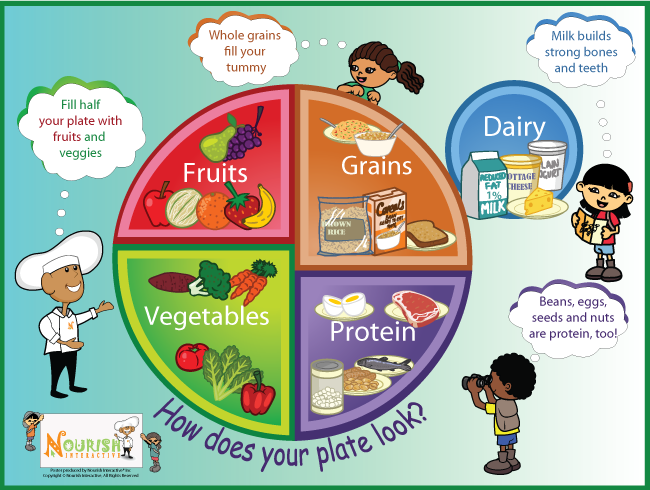 nine0003
nine0003 First meal
Breakfast
 What can you offer your child for breakfast? Milk porridge is the perfect product for a good start to the day - it is rich in complex carbohydrates, which ensures long-term saturation and energy boost. The dietary fibers included in its composition are involved in comfortable digestion. In addition, cereals are a source of almost all essential nutrients. In the nutrition of babies at 10 months, the consistency of porridge may already be less homogeneous. Try introducing porridge into your diet, which contains cereal flakes and crushed berries, which helps your child learn to chew. At this age, mothers often begin to cook porridge at home, but it is preferable to use industrial products. Commercially produced porridge is often multi-cereal, which makes it possible to use the beneficial qualities of various grain crops, including those that cannot be cooked at home due to poor digestibility. Cereals go well with fruits and vegetables. For breakfast, you can additionally offer fruit puree or slices of boiled / baked soft fruits for breakfast.
What can you offer your child for breakfast? Milk porridge is the perfect product for a good start to the day - it is rich in complex carbohydrates, which ensures long-term saturation and energy boost. The dietary fibers included in its composition are involved in comfortable digestion. In addition, cereals are a source of almost all essential nutrients. In the nutrition of babies at 10 months, the consistency of porridge may already be less homogeneous. Try introducing porridge into your diet, which contains cereal flakes and crushed berries, which helps your child learn to chew. At this age, mothers often begin to cook porridge at home, but it is preferable to use industrial products. Commercially produced porridge is often multi-cereal, which makes it possible to use the beneficial qualities of various grain crops, including those that cannot be cooked at home due to poor digestibility. Cereals go well with fruits and vegetables. For breakfast, you can additionally offer fruit puree or slices of boiled / baked soft fruits for breakfast. Cottage cheese and vegetable or cottage cheese and cereal casseroles and puddings can diversify the weekly breakfast menu. Every day a child can eat up to 50 grams of cottage cheese. If the child has not previously had allergic reactions, you can expand the range of fruits and gradually introduce citrus fruits and a number of exotic fruits into the diet. nine0003
Cottage cheese and vegetable or cottage cheese and cereal casseroles and puddings can diversify the weekly breakfast menu. Every day a child can eat up to 50 grams of cottage cheese. If the child has not previously had allergic reactions, you can expand the range of fruits and gradually introduce citrus fruits and a number of exotic fruits into the diet. nine0003 Drinks
Lunch
 At 10 months, it is already possible to offer the baby unpurified soup, provided that well-boiled vegetables are used. Meat complementary foods should be combined with foods that promote the best absorption of trace elements important for growth and development, especially copper and iron. First of all, these are vegetables, with the exception of legumes, and buckwheat. Given that different types of meat contain different amounts of trace elements and vitamins, a balanced weekly diet includes at least 3-4 types of meat complementary foods. Also, 1-2 times a week, the baby can eat dishes with the addition of offal - the liver, tongue and heart. In addition to mashed meat, the baby can be offered coarsely chopped meatballs or steam cutlets. Adding vegetable and cereal components to a meat dish makes the taste more tender and enriches the diet with other beneficial nutrients. Despite the insipid taste of dinner dishes, which seems to many adults, it is not recommended to add salt and spices to them.
At 10 months, it is already possible to offer the baby unpurified soup, provided that well-boiled vegetables are used. Meat complementary foods should be combined with foods that promote the best absorption of trace elements important for growth and development, especially copper and iron. First of all, these are vegetables, with the exception of legumes, and buckwheat. Given that different types of meat contain different amounts of trace elements and vitamins, a balanced weekly diet includes at least 3-4 types of meat complementary foods. Also, 1-2 times a week, the baby can eat dishes with the addition of offal - the liver, tongue and heart. In addition to mashed meat, the baby can be offered coarsely chopped meatballs or steam cutlets. Adding vegetable and cereal components to a meat dish makes the taste more tender and enriches the diet with other beneficial nutrients. Despite the insipid taste of dinner dishes, which seems to many adults, it is not recommended to add salt and spices to them.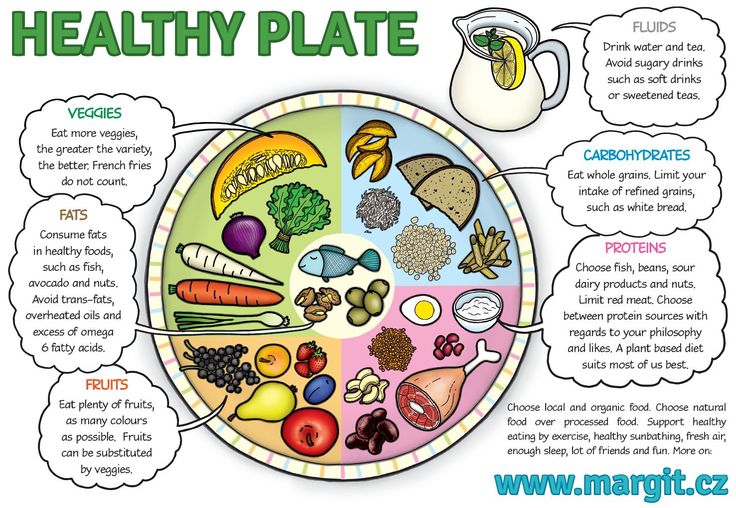 At 10 months, onions and parsley and dill can be used to develop taste buds in dishes. nine0003
At 10 months, onions and parsley and dill can be used to develop taste buds in dishes. nine0003 Snack
Dinner






